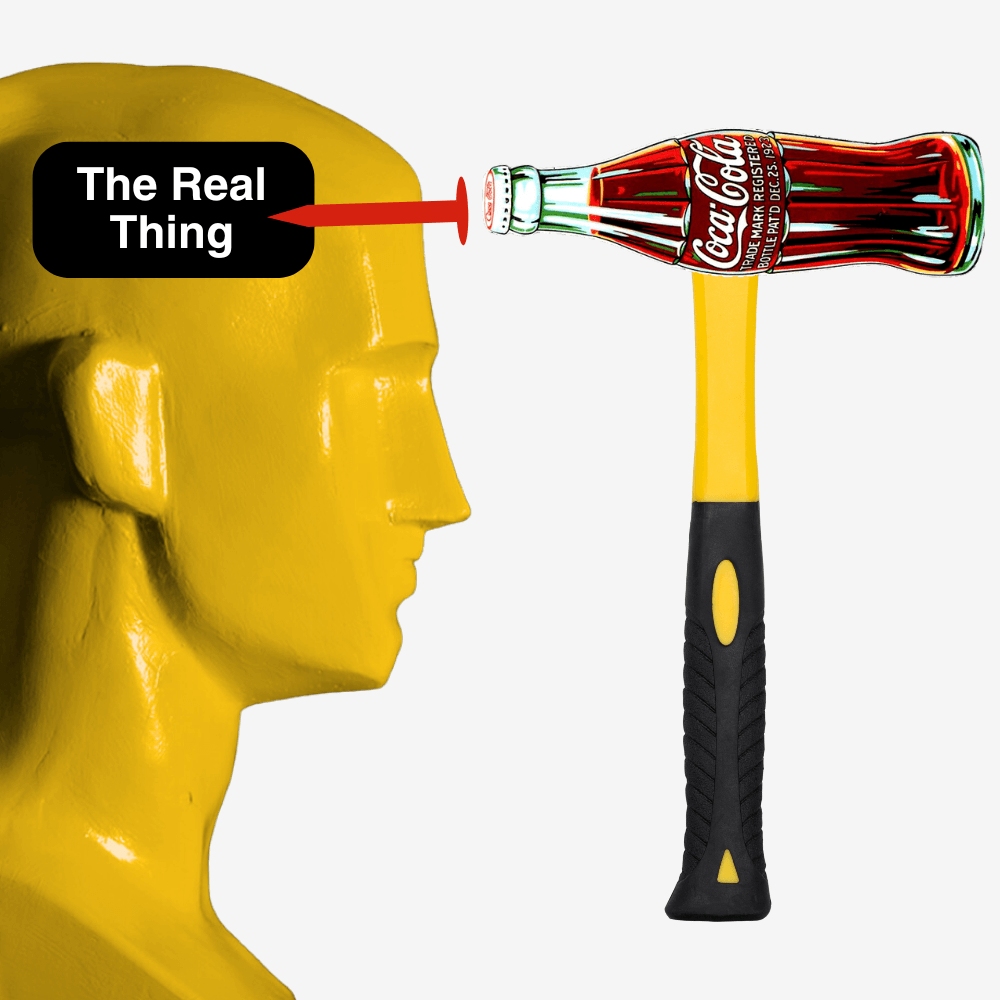Beach, Beer, and Branding: How Corona Uses a Visual Hammer to Nail Its Positioning
In this post we look at how one lime-topped bottle of beer became shorthand for the word “beach”—and what it teaches us about brand positioning and the power of visual hammers.
I recently visited Florida to enjoy some time with family.
On one of my last mornings there I went to the beach for a few hours.
Later that afternoon, while sitting at my laptop doing some work, a craving for a Corona with a lime hit me like a truck.
I’m not a huge beer drinker.
And yet, by simply visiting the beach, I became suddenly thirsty for a perfectly sweaty bottle of that sweet Mexican cerveza.
Why?
Strong brand positioning.
Corona has been positioning itself as the ultimate beach beer for so long that it’s created a kind of shortcut in the brain: if I’m at the beach, I’m thirsty for a Corona.
How Visuals Can Help Nail Brand Positioning
Laura Ries, a well-known positioning author, speaker, and consultant, might call the image of a Corona sitting in the sand or near water a visual hammer—a consistent, emotionally charged image that drives a brand’s message into the mind.
(You can read the first chapter of Ries’s book on visual hammers here.)
The hammer isn’t the message itself. It’s the tool that drives home a specific word.
Credit: ries.com/visualhammer
In Corona’s case, that word is beach, and the hammer is the Corona bottle with a lime, usually incorporated in some type of beach scene.
Visual hammers work in service of brand positioning–the strategic process of claiming a specific space in the mind of your audience.
The goal is simple but powerful: own that word so completely that it triggers near-automatic recall. When someone hears it, sees it, or experiences something related to it, your brand comes to mind—immediately.
Important to note: While Corona does use a visual hammer to own the word “beach,” they’ve maintained ownership by going beyond showing imagery of sun-drenched bottles on the sand. They’ve built a brand ecosystem that consistently reinforces its beach-first positioning.
For example, when visiting their website you’re greeted with the rolling waves of a beach.
Similarly, Corona doesn’t just associate itself with the beach—it actively works to protect it, making environmental care part of its brand narrative.
From their origin story to their environmental efforts, Corona has built a world around the beach—and used visual cues to anchor that idea in our minds. They’ve made the image do more than tell a story. It cements their positioning.
And they’re not alone. Many of the world’s most iconic brands use visual hammers to drive home the one idea they want to own.
Types of Visual Hammers
Ries posits that there are 10 ways to create a visual hammer. They are:
Shape
Color
Product
Package
Symbol
Celebrity
Action
Founder
Animal
Heritage
Credit: ries.com/visualhammer
In the case of Corona, we might characterize it as an “action” visual hammer because we rarely see the beer bottle on its own; it’s almost always being used in a beach scene
Other examples of visual hammers include:
The pink ribbon – Symbol. Word/phrase: Breast cancer awareness
The Gieco gekko – Animal. Word/phrase: Insurance
Tiffany’s blue box - Package. Word/phrase: High-end jewelry
Monster’s claw-mark “M” - Logo. Word/phrase: Beast energy
Croc’s Clog Shape - Shape. Word/phrase: Comfort
Each of these visuals reinforces a brand’s position by repeatedly tying one image to one idea. They aren’t trying to say everything—they’re working to own something specific in your mind. That’s what makes them powerful.
The mistake many brands make is thinking a logo alone is enough. But unless it’s used to reinforce a clear, singular idea—and unless that idea ties to a distinct position—it’s just a design. A visual hammer only works when it helps drive home a word the brand wants to own.
Corona doesn’t need to say the word “beach” anymore. It just hands you the bottle.
Conclusion
So the next time you find yourself craving a Corona on the beach—or coveting a Tiffany blue box, or smiling at a Geico commercial—you’ll know it’s not just good marketing. It’s the result of a brand consistently hammering home a specific word, idea, or feeling until it takes up permanent space in your mind.
That’s the real power of visual hammers: they don’t just support positioning—they make it stick.
Want to Find Your Word?
I help brands uncover the one word they want to be known for—and build the positioning, language, and visuals that bring it to life. If you’re ready to define your brand’s space in the mind of customers, reach out at ashley@peoplethebrand.com or send me a message on LinkedIn.












